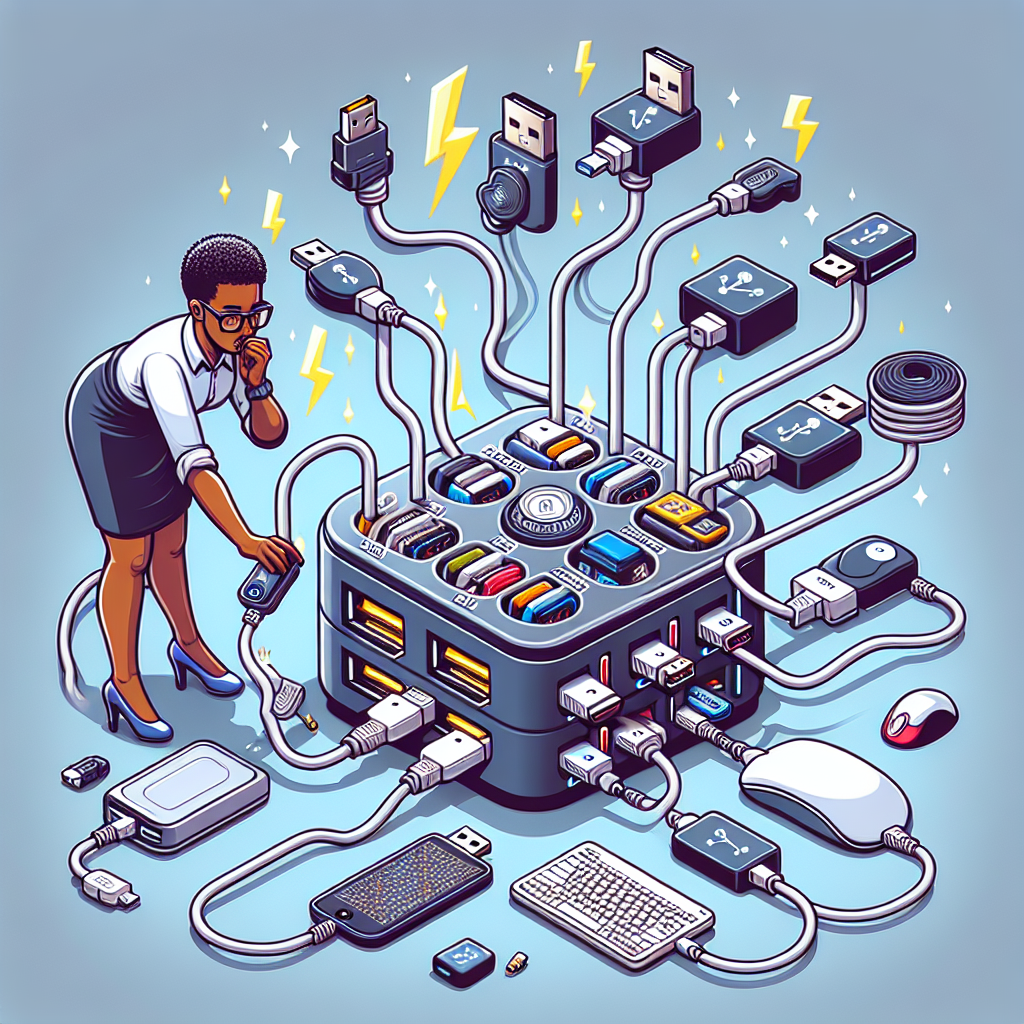In today’s digital age, USB hubs have become essential for those who have multiple devices to connect to a single computer. Whether you’re a gamer, a content creator, or simply have a lot of peripherals, USB hubs provide convenience by allowing various devices to communicate through one port. However, overloading a USB hub can lead to various issues such as device malfunction, data transfer failures, or even damage to connected devices. This article explores how to prevent overloading your USB hub effectively.
| USB Hub Specifications | Considerations |
|---|---|
| USB 2.0 | Up to 480 Mbps speed, limited power (up to 500 mA per port). |
| USB 3.0 | Up to 5 Gbps speed, more power (up to 900 mA per port). |
| USB 3.1 | Up to 10 Gbps speed, enhanced power delivery. |
| USB-C | Up to 10 Gbps and higher, capable of delivering more power. |
Understanding USB Hub Overload
Before discussing preventive measures, let’s understand what it means to overload a USB hub. A USB hub can be overloaded when more devices are connected than its specifications can handle, leading to unexpected behavior. The key points associated with USB hub overload include:
- Power Limitations: Each USB port has a specific power output. Exceeding this limit can cause devices to disconnect.
- Data Bandwidth: Each hub has a maximum data transfer speed, and overloading might degrade performance.
- Device Compatibility: Not all devices operate efficiently when multiple connections are made simultaneously.
How to Prevent Overloading Your USB Hub
1. Know Your USB Hub’s Specifications
Understanding the specifications of your USB hub is the first step in preventing overload. Check the maximum number of devices it can support and the power limits of each port. Consider investing in a hub that supports USB 3.0 or USB-C for better power and data transfer capabilities. High-quality hubs usually come with their own external power sources, which can be a significant upgrade if you require numerous connections.
2. Limit the Number of Devices Connected
A straightforward solution to prevent overloading is to limit the number of devices connected to a single USB hub. Prioritize essential devices and consider disconnecting those that are not in use. For example, if you connect external hard drives, webcams, and USB flash drives simultaneously, consider connecting them one at a time, or using different hubs to distribute the connections.
3. Use Powered USB Hubs
Powered USB hubs come with an external power supply and can support more devices without overloading. These hubs allow devices to draw power directly from an outlet, which means you can connect multiple peripherals without worrying about exceeding the power limits of your computer’s USB ports.
4. Monitor Power Usage
Many powered hubs come with LED indicators or software tools that allow you to monitor the power usage of connected devices. Utilizing such features can give you insight into how much power each device is using, helping you manage connections more effectively. Always ensure that you don’t exceed the combined power limit of the hub.
5. Implement USB Power Management Settings
Most operating systems have power management settings that control how USB devices draw power. Configure settings to turn off devices that are not actively being used. On Windows, you can set options to recognize when a device disconnects and turn off power to it. This not only helps in managing power effectively but also in preventing overload issues.
6. Separate High-Power Devices
Some USB devices, such as external hard drives and printers, consume more power than typical peripherals like mice or keyboards. If you have high-power devices, connect them directly to your computer or a separate powered hub. This separation reduces the risk of overloading your primary USB hub.
7. Use USB Extension Cables
Using USB extension cables can help distribute connections across different ports on your computer. By connecting some devices directly to the computer using extension cables, you can alleviate overload on the USB hub while maintaining solid data transfer speeds for all connected devices.
8. Upgrade Your USB Equipment
Finally, consider upgrading your existing USB hub or switching to USB 3.0 or USB-C technology if you are using older technology. Newer standards allow for increased speeds and power capacities. This can significantly reduce the chances of overloading your devices simply by improving their communication capabilities.
Conclusion
Preventing the overloading of your USB hub is essential to maintaining device functionality and ensuring a seamless user experience. By understanding your hub’s limitations, using powered hubs, managing connections, and upgrading your equipment, you can avoid issues associated with USB hub overload. Implementing these strategies will help you make the most out of your USB devices while keeping them safe and operational.

